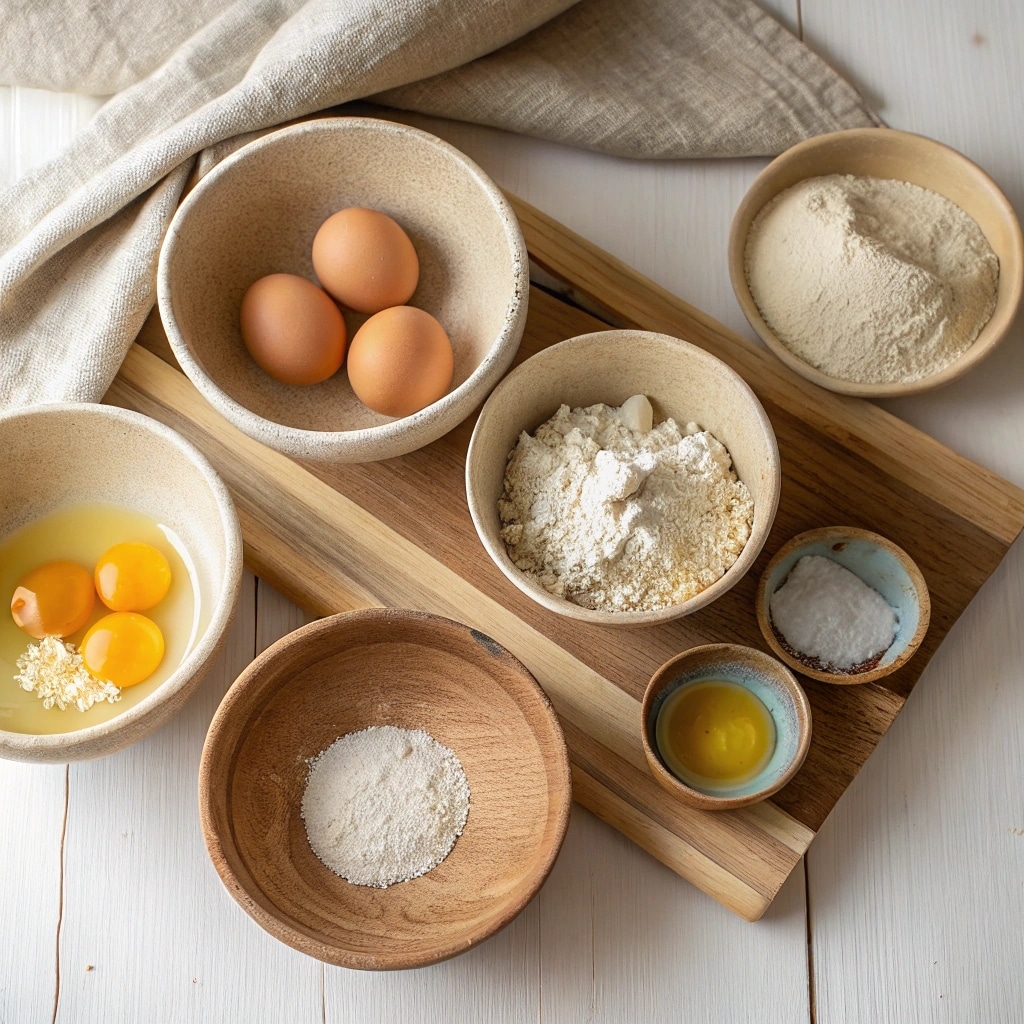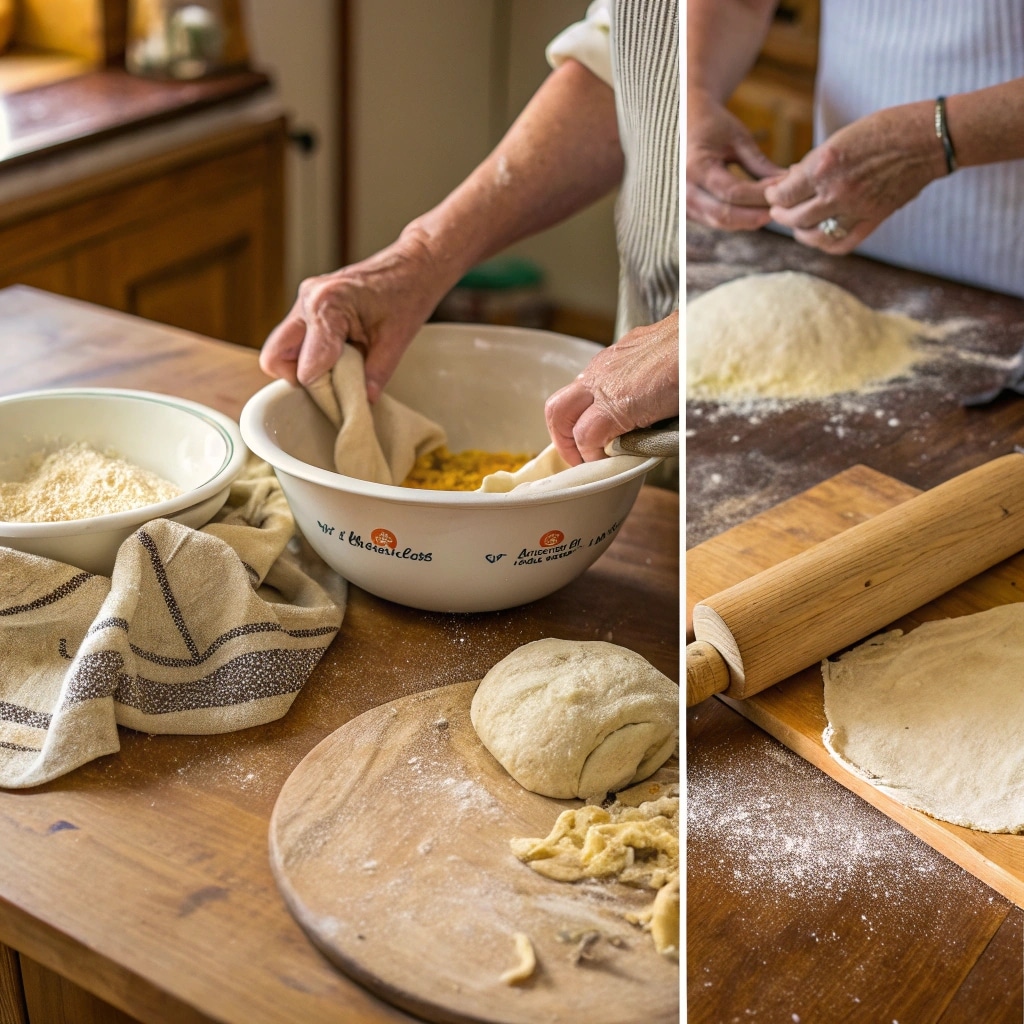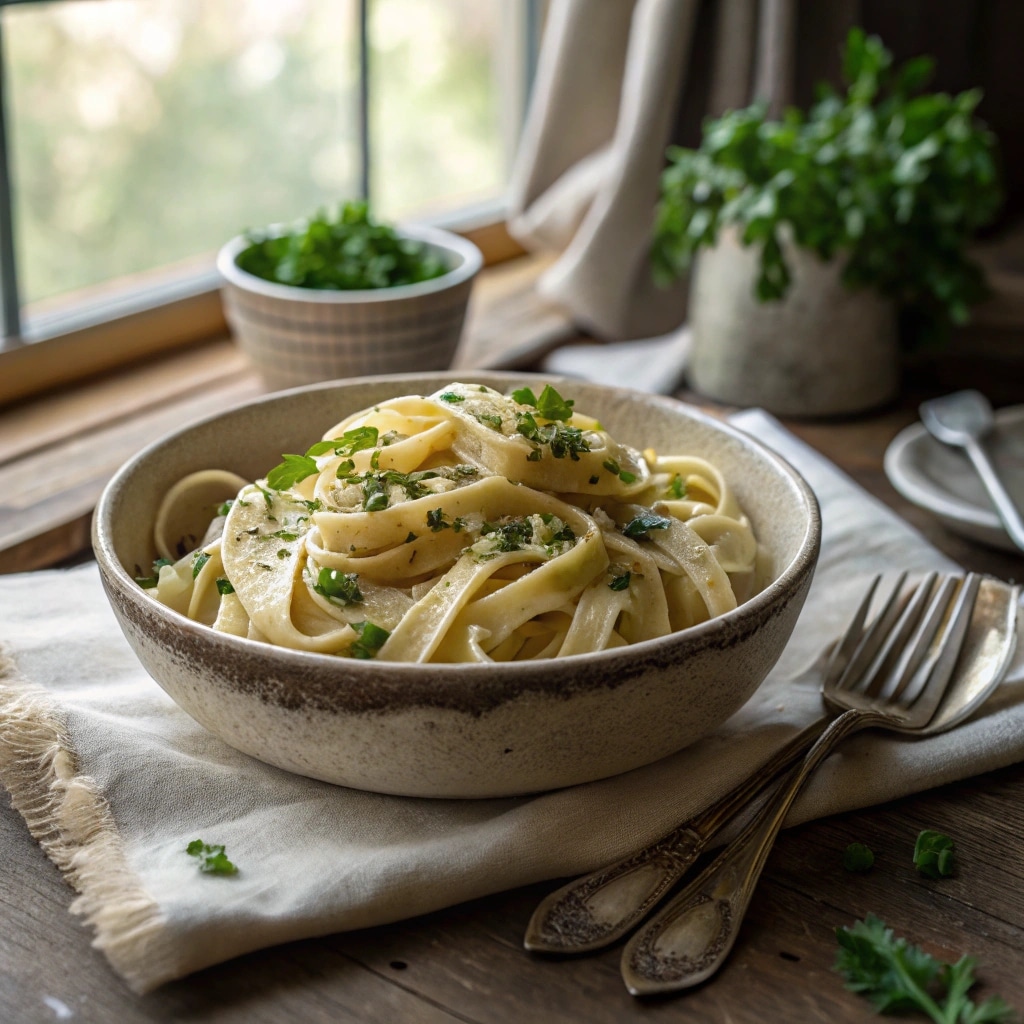Sourdough pasta noodles are the rustic, tangy, and gut-friendly take on traditional pasta that’s capturing the hearts of home cooks across the country. Whether you’re a sourdough enthusiast with extra starter or just looking for a healthier, homemade pasta option, these noodles bring old-world flavor with modern-day benefits. In this article, you’ll learn how sourdough pasta noodles compare to store-bought pasta, why they’re gaining popularity, and how you can make them part of your weekly dinner rotation.
Table of Contents

Sourdough Pasta Noodles: A Homemade Favorite with a Tangy Twist
- Total Time: 2 hours 30 minutes (including rest)
- Yield: 4 servings 1x
- Diet: Vegetarian
Description
Sourdough pasta noodles bring tangy flavor, a chewy bite, and gut-friendly benefits to your table. This simple recipe walks you through making them from scratch with just eggs, flour, and your sourdough starter.
Ingredients
1 cup active sourdough starter
1 ½ cups all-purpose flour (plus more for kneading)
2 large eggs
½ teaspoon salt
1 tablespoon olive oil (optional)
Instructions
1. In a bowl, mix sourdough starter and eggs until smooth.
2. Add flour and salt, stirring until a shaggy dough forms.
3. Turn out and knead for 8–10 minutes until elastic.
4. Wrap and ferment at room temperature for 2 to 4 hours.
5. Divide and roll the dough thinly on a floured surface.
6. Cut into noodles and dust lightly with flour.
7. Boil in salted water for 2–3 minutes until tender.
8. Serve immediately with your favorite sauce.
Notes
For extra flavor, try adding herbs or cracked pepper to the dough.
Freeze uncooked noodles in small bundles for quick future meals.
- Prep Time: 20 minutes
- Cook Time: 3 minutes
- Category: Dinner
- Method: Boiling
- Cuisine: Rustic Italian-American
Nutrition
- Serving Size: 1 cup cooked
- Calories: 220
- Sugar: 0g
- Sodium: 100mg
- Fat: 4g
- Saturated Fat: 1g
- Unsaturated Fat: 3g
- Trans Fat: 0g
- Carbohydrates: 35g
- Fiber: 2g
- Protein: 8g
- Cholesterol: 90mg
The Story Behind My Sourdough Pasta Noodles
A Vermont memory meets an Asheville kitchen
Sourdough pasta noodles were never something I expected to fall in love with—until I made them on a quiet Sunday afternoon in my Asheville kitchen. The sourdough starter I’d been feeding for days was bubbling away, and I didn’t feel like baking another loaf of bread. That’s when I remembered my dad’s homemade egg noodles—thick, chewy, and always simmered in one of his big winter stews back in Vermont. What if I used sourdough instead of water to make the dough?
As I mixed the eggs, flour, salt, and my lively starter, the scent that filled the room was familiar and warm. The dough was softer, stretchier—alive in a way regular pasta never seemed to be. Rolling it out and slicing it by hand brought me right back to that flour-covered counter in my childhood kitchen. It wasn’t perfect, but it was honest—and it tasted like home.
What makes sourdough pasta noodles stand out
Sourdough pasta noodles aren’t just about flavor; they bring a lot to the table in terms of texture and nutrition. Thanks to the natural fermentation process, these noodles have lower gluten, which makes them easier to digest. That subtle tang enhances savory sauces and adds complexity even to simple preparations.
They’re ideal for creamy dishes, hearty casseroles, or even chilled noodle salads. Want to see how well they work in a complete meal? Try pairing them with a dish like this creamy mushroom and asparagus chicken penne, where the sourdough noodles hold sauce beautifully without going limp.
Sourdough Pasta Noodles Recipe & Health Benefits
Ingredients to make sourdough pasta noodles from scratch
Sourdough pasta noodles don’t require any fancy equipment or obscure ingredients. If you’ve got a sourdough starter and a bit of time, you’re well on your way to a delicious, hearty pasta dish. Here’s what you’ll need:

Ingredients:
- 1 cup active sourdough starter (100% hydration)
- 1 ½ cups all-purpose flour (plus more for kneading)
- 2 large eggs
- ½ teaspoon salt
- 1 tablespoon olive oil (optional, for richness)
These ingredients will make about 4 servings of fresh sourdough pasta noodles. You can easily double the batch and freeze the extras for future meals.
Step-by-step instructions for making sourdough pasta noodles
This dough comes together with just a few simple steps and a little patience. Give yourself time for the fermentation and rest—it’s worth every minute.

Instructions:
- In a large mixing bowl, whisk the eggs and sourdough starter until smooth.
- Add flour and salt gradually, mixing until a shaggy dough forms.
- Turn the dough onto a floured surface and knead for 8–10 minutes until it’s smooth and elastic.
- Wrap the dough in plastic wrap or place in a covered bowl. Let it ferment at room temperature for 2 to 4 hours.
- After resting, divide the dough into 2 portions. Roll each out on a floured surface until thin (about 1/16 inch).
- Slice into noodles using a knife or pasta cutter—fettuccine width works great for sourdough pasta noodles.
- Dust noodles with flour and let them dry for 15 minutes before cooking.
- Bring salted water to a boil, then cook noodles for 2–3 minutes until tender. Serve immediately with your favorite sauce.
You’ll love how these noodles soak up flavor while maintaining that signature chewy bite. They’re especially satisfying when paired with fresh veggies or a dish like keto cottage cheese egg pizza crust as a high-protein side.
Sourdough Pasta vs. Traditional Pasta: Which Is Better?
How sourdough pasta noodles compare to store-bought pasta
Sourdough pasta noodles aren’t just a rustic twist—they offer real benefits compared to the boxed stuff in your pantry. The biggest difference starts with fermentation. Traditional pasta is made from flour and water (or eggs), mixed and dried. Sourdough pasta noodles, on the other hand, use a naturally fermented starter. That extra step changes everything—from texture and flavor to digestibility.
Where store-bought noodles are convenient but neutral in taste, sourdough pasta delivers a slight tang and heartiness that holds up beautifully under rich sauces. The chew is more toothsome, the structure firmer, and the aroma far more inviting. If you’re looking for a pasta that feels homemade in every sense, sourdough wins.
Even better, you know exactly what’s in it: no preservatives, no fillers—just flour, eggs, and fermented starter. It’s pasta with a story, not just a barcode.
Is sourdough pasta healthier than regular pasta?
For many, the answer is yes. The natural fermentation process used in sourdough pasta noodles helps break down phytic acid, making minerals like iron and magnesium more bioavailable. It also reduces gluten and starch levels, making the pasta easier to digest and less likely to spike blood sugar. While it’s not necessarily low-carb, it may be more gentle on the body than traditional white flour noodles.
The real value lies in how you feel after eating it—satisfied, not sluggish.
You can also combine sourdough noodles with lighter meals to balance richness. Try serving it alongside something fresh like killed lettuce salad—a Southern favorite that adds contrast and crunch.
How to Customize and Store Your Sourdough Pasta Noodles
Flavor twists and noodle variations you can try

One of the best things about sourdough pasta noodles is how customizable they are. Once you’ve got the basic dough down, you can mix in all kinds of ingredients to match your mood or meal. Want a little kick? Add cracked black pepper or chili flakes. Going earthy? Try a spoonful of finely chopped herbs like basil or rosemary. For added richness, you can swap a portion of all-purpose flour for semolina or whole wheat flour for a nuttier flavor.
You can also play with noodle shapes. Fettuccine is a classic, but sourdough dough is sturdy enough to handle ravioli, lasagna sheets, or even hand-cut pappardelle. If you love stuffed pasta, this dough holds fillings without tearing—perfect for creamy cheeses or roasted veggies.
The dough is forgiving, and after one or two tries, you’ll find it rolls out easier than most egg pasta. And when cooked, those noodles carry flavor better than anything boxed.
How to store sourdough pasta noodles for later
Fresh sourdough pasta noodles can be made ahead of time and stored with ease. Once cut and lightly floured, spread them out on a baking sheet and air-dry for up to an hour. After that:
- Short-term: Store in an airtight container in the fridge for up to 2 days.
- Long-term: Freeze in small bundles. Place on a tray to freeze individually, then store in freezer bags for up to 2 months.
When you’re ready to use frozen noodles, just drop them directly into boiling water—no need to thaw. They’ll cook in about 3–4 minutes, depending on thickness.
Pair your fresh pasta with bold toppings or sauces. It’s perfect with a protein like Italian sausage in the air fryer for a full-flavored, satisfying dinner that comes together fast.
Frequently Asked Questions About Sourdough Pasta Noodles
Can you use sourdough for pasta?
Yes, you absolutely can use sourdough for pasta. In fact, sourdough starter adds both flavor and structure to the dough, creating noodles with a satisfying chew and a slight tang. The natural fermentation helps break down gluten and starches, making sourdough pasta noodles easier to digest than traditional versions. Just make sure your starter is active and bubbly before mixing.
Are sourdough noodles healthy?
Sourdough noodles are often considered healthier than conventional pasta. Thanks to fermentation, the dough becomes more digestible and may have a lower glycemic impact. The process also reduces anti-nutrients like phytic acid, helping your body absorb more minerals. While they’re not low-carb, sourdough pasta noodles offer more nutritional depth and gut-friendly benefits than store-bought varieties.
Is sourdough bread healthier than pasta?
It depends on what you’re comparing. Sourdough bread and sourdough pasta both offer benefits due to fermentation, such as easier digestion and richer flavor. However, sourdough bread typically has more fiber if made with whole grains. On the other hand, sourdough pasta noodles can be enriched with eggs and offer more protein per serving. Both have their place in a balanced diet.
Is sourdough pasta low carb?
Not exactly. Sourdough pasta noodles still contain carbohydrates, but fermentation slightly reduces the total starch content. The main benefit isn’t lower carbs—it’s how your body processes them. Fermented dough digests more slowly, which can help with blood sugar control and satiety. If you’re looking for lower-carb pasta, sourdough versions are a better option than traditional white flour noodles—but not as low as keto pasta.
Conclusion: Why Sourdough Pasta Noodles Belong in Your Kitchen
Sourdough pasta noodles aren’t just a trend—they’re a return to real, nourishing food made with time and intention. From their deep, tangy flavor to their gut-friendly benefits, these noodles bring something special to the table. They’re more than a vehicle for sauce—they’re the star of the plate.
Whether you’re reviving a starter, cutting back on processed carbs, or just craving a hands-on kitchen project that pays off big at dinner, sourdough pasta noodles are worth the effort. With a few basic ingredients and a little fermentation time, you can make pasta that feels homemade, tastes better, and leaves you feeling good.
For more check this How to Cook Pasta




